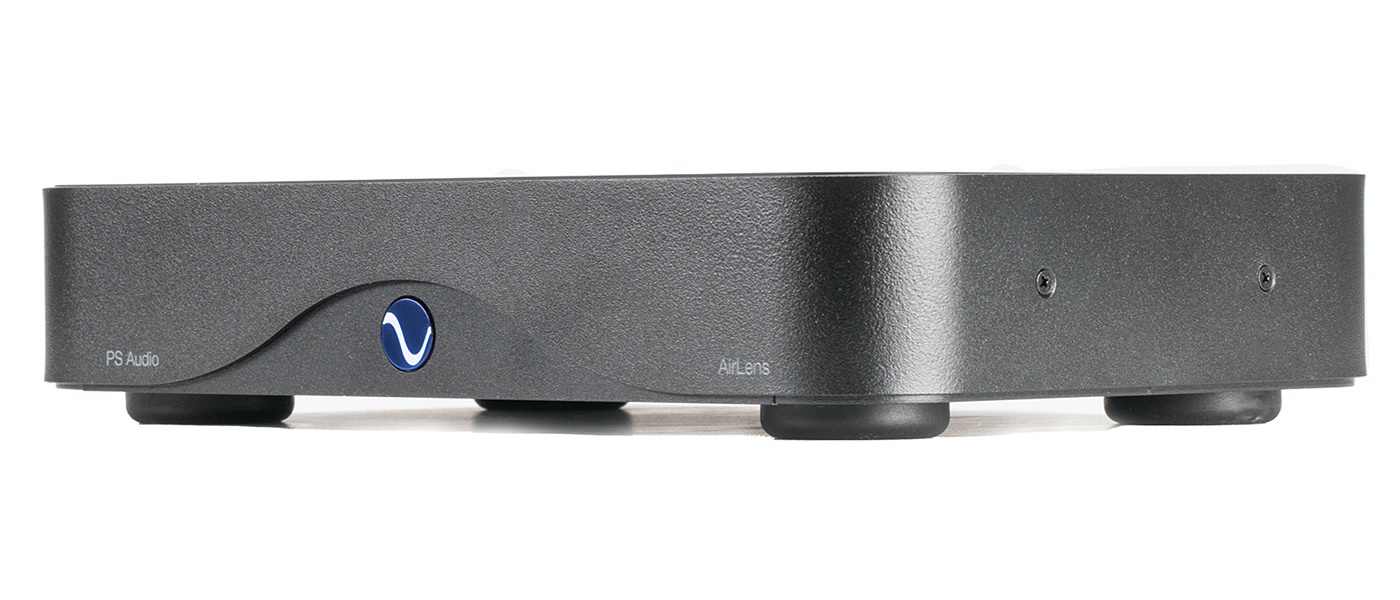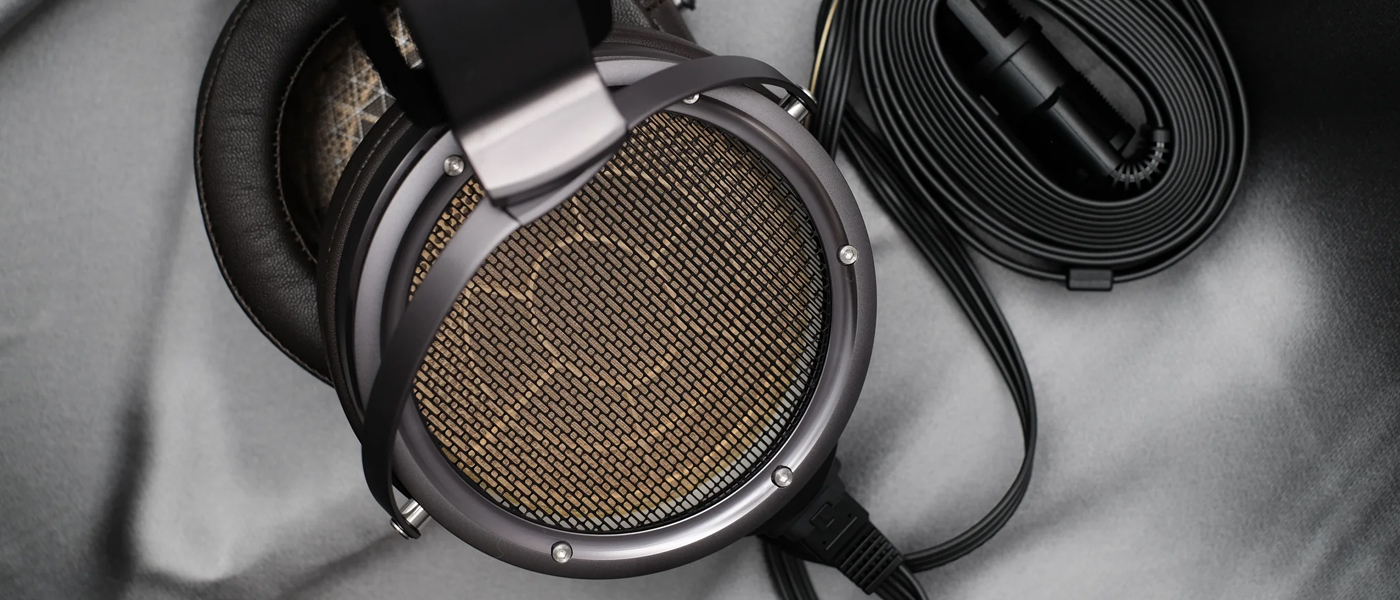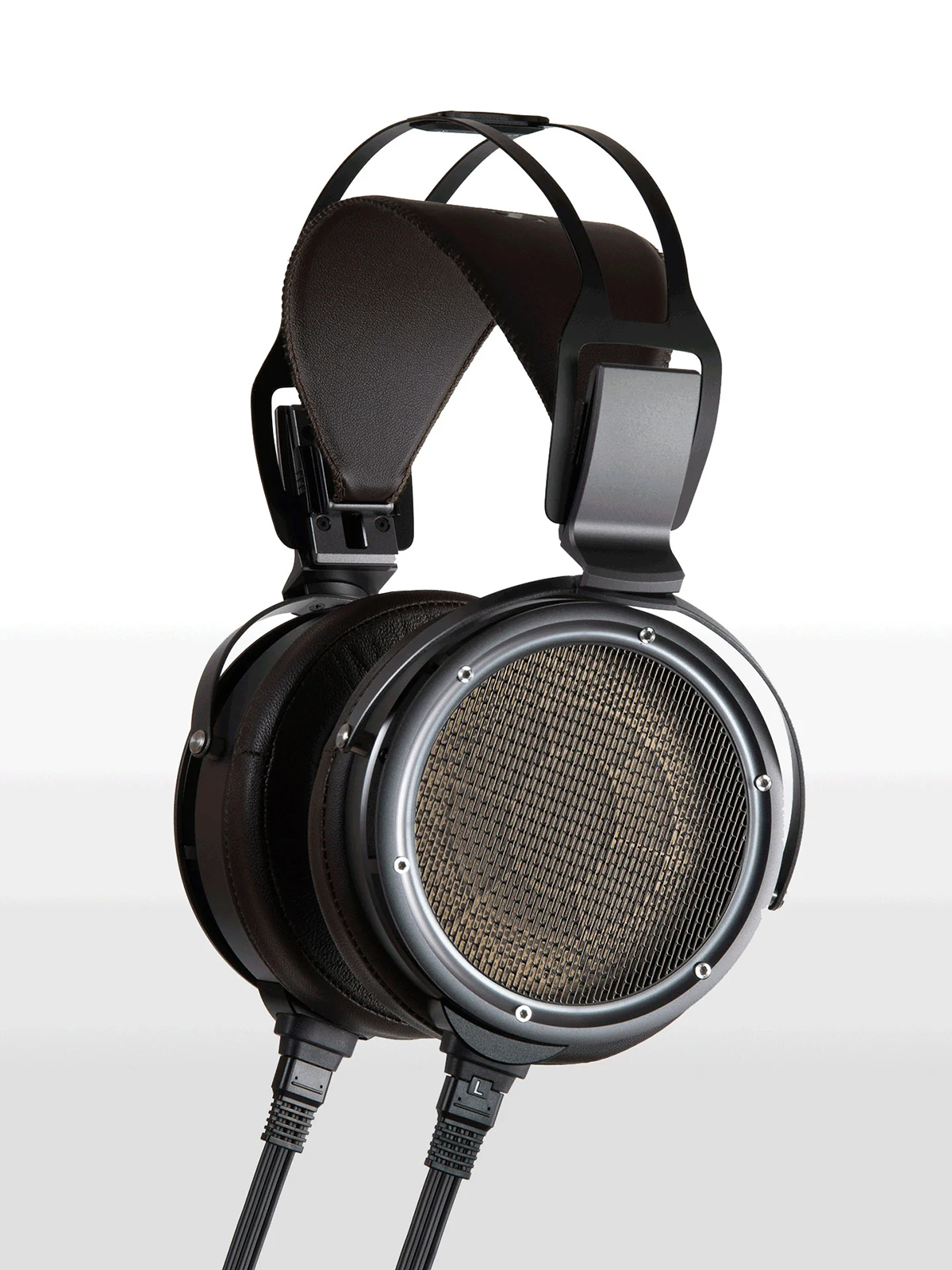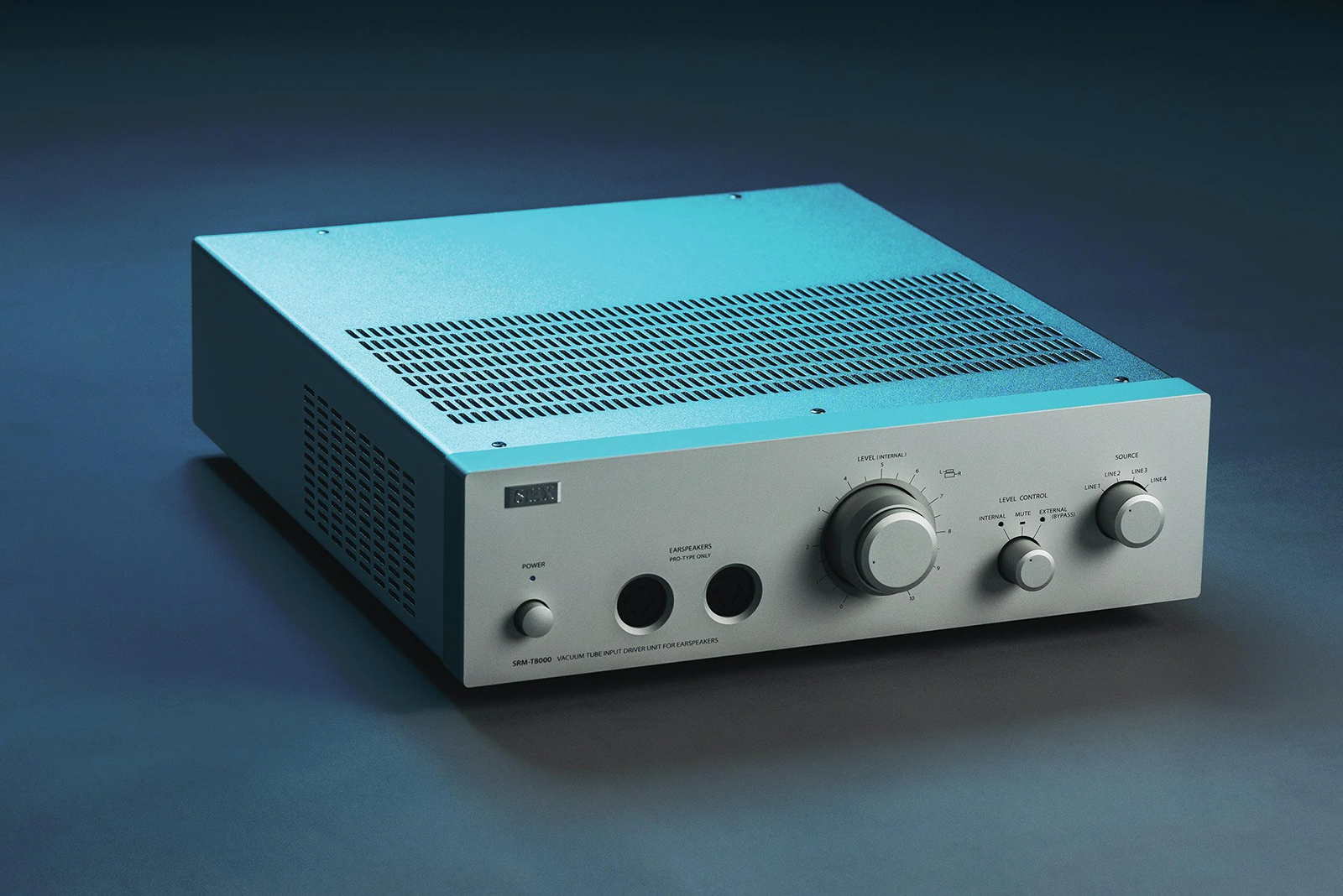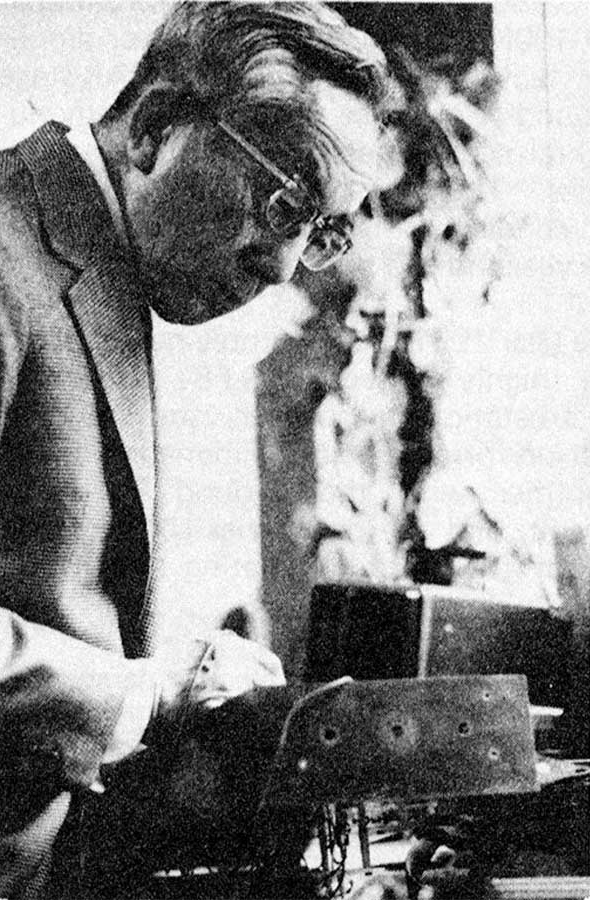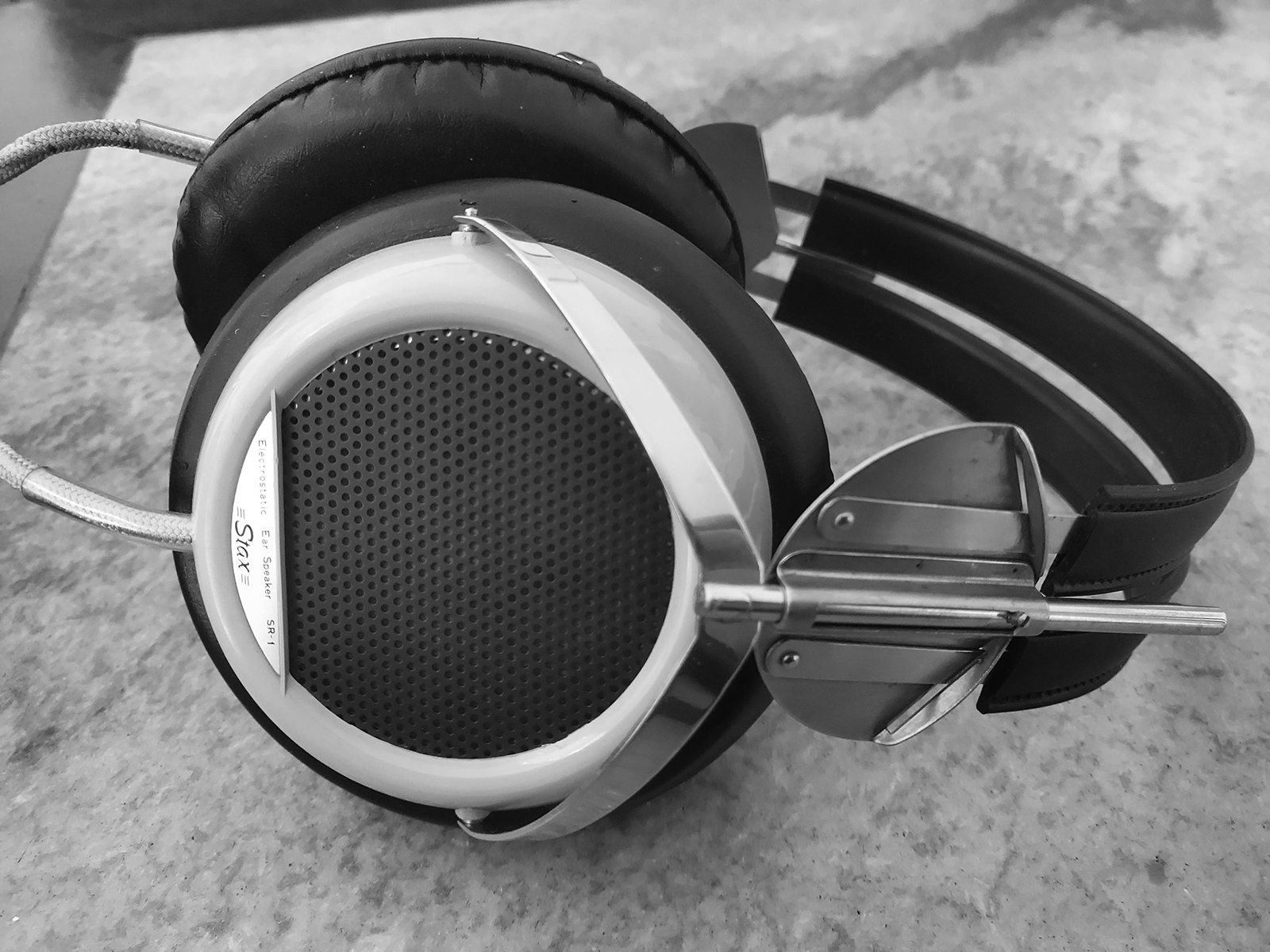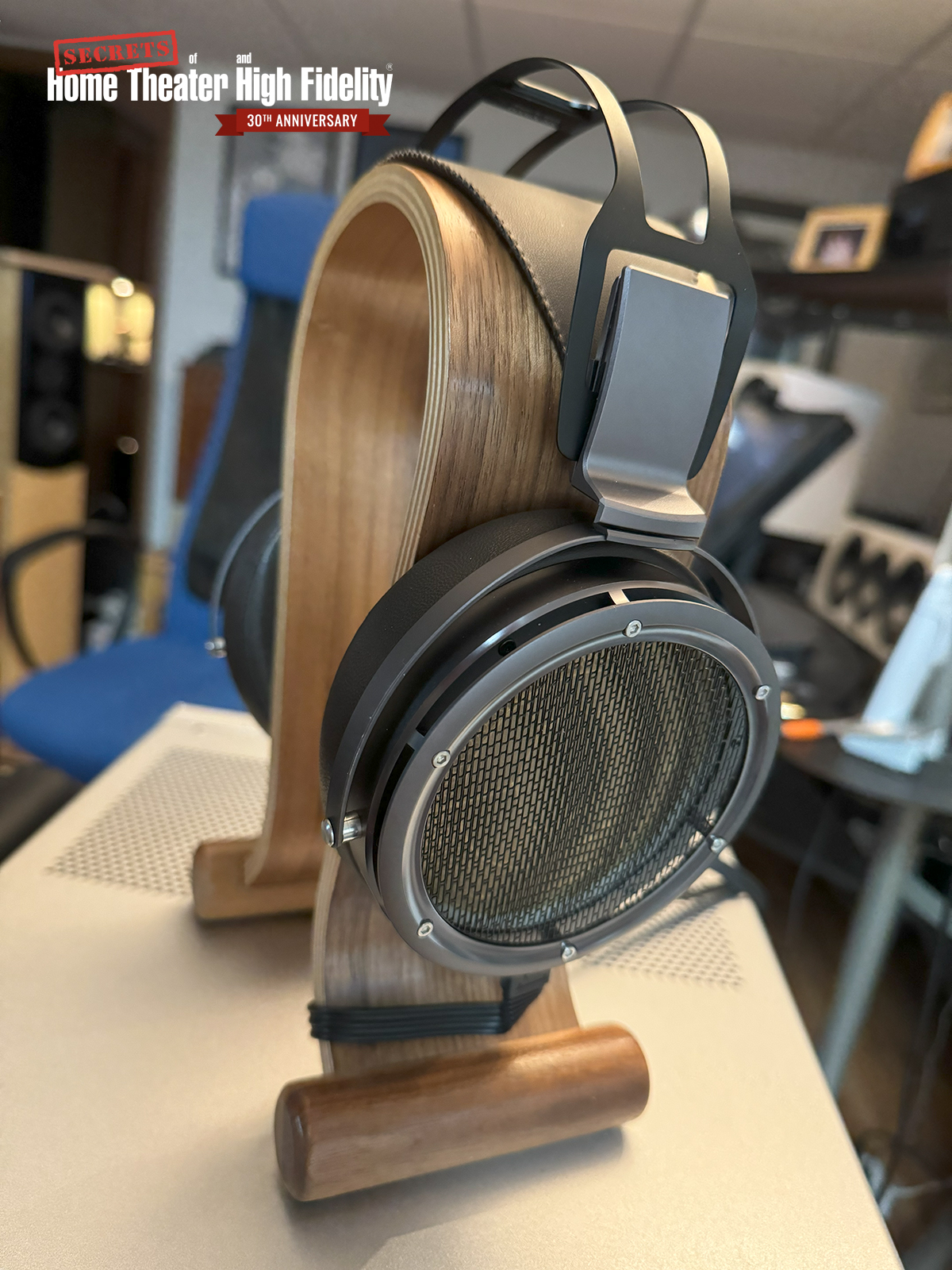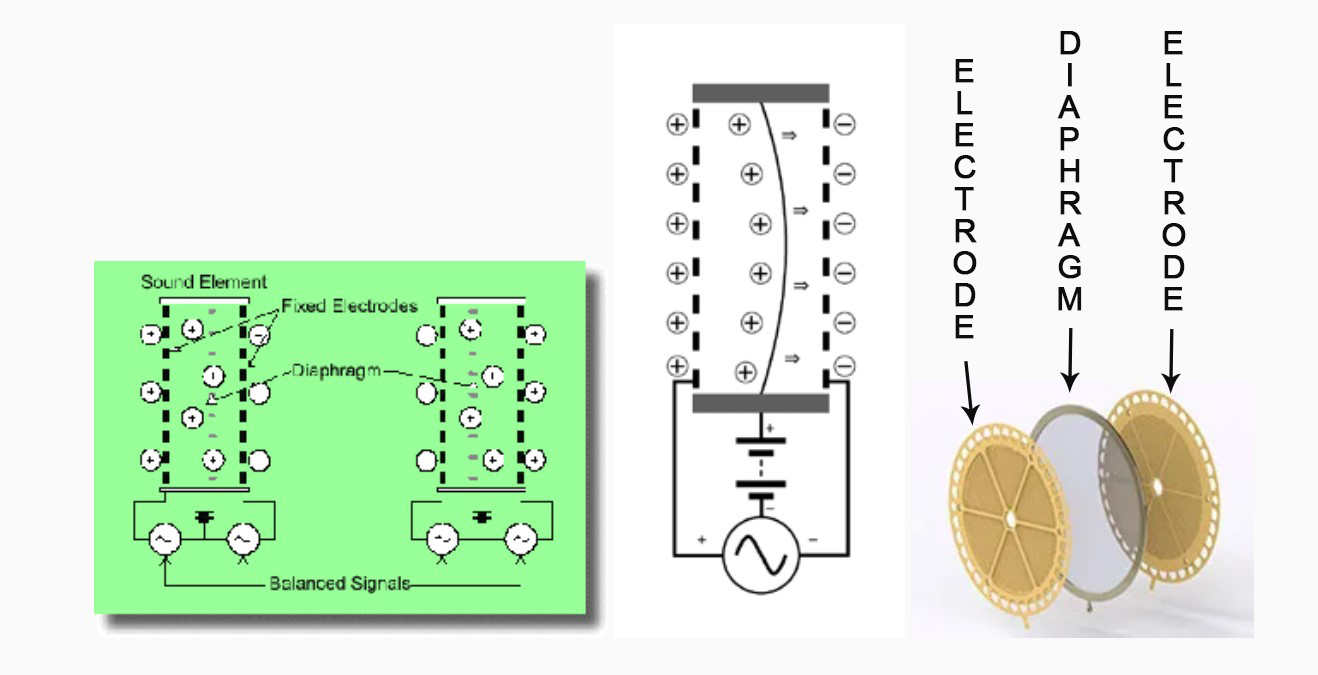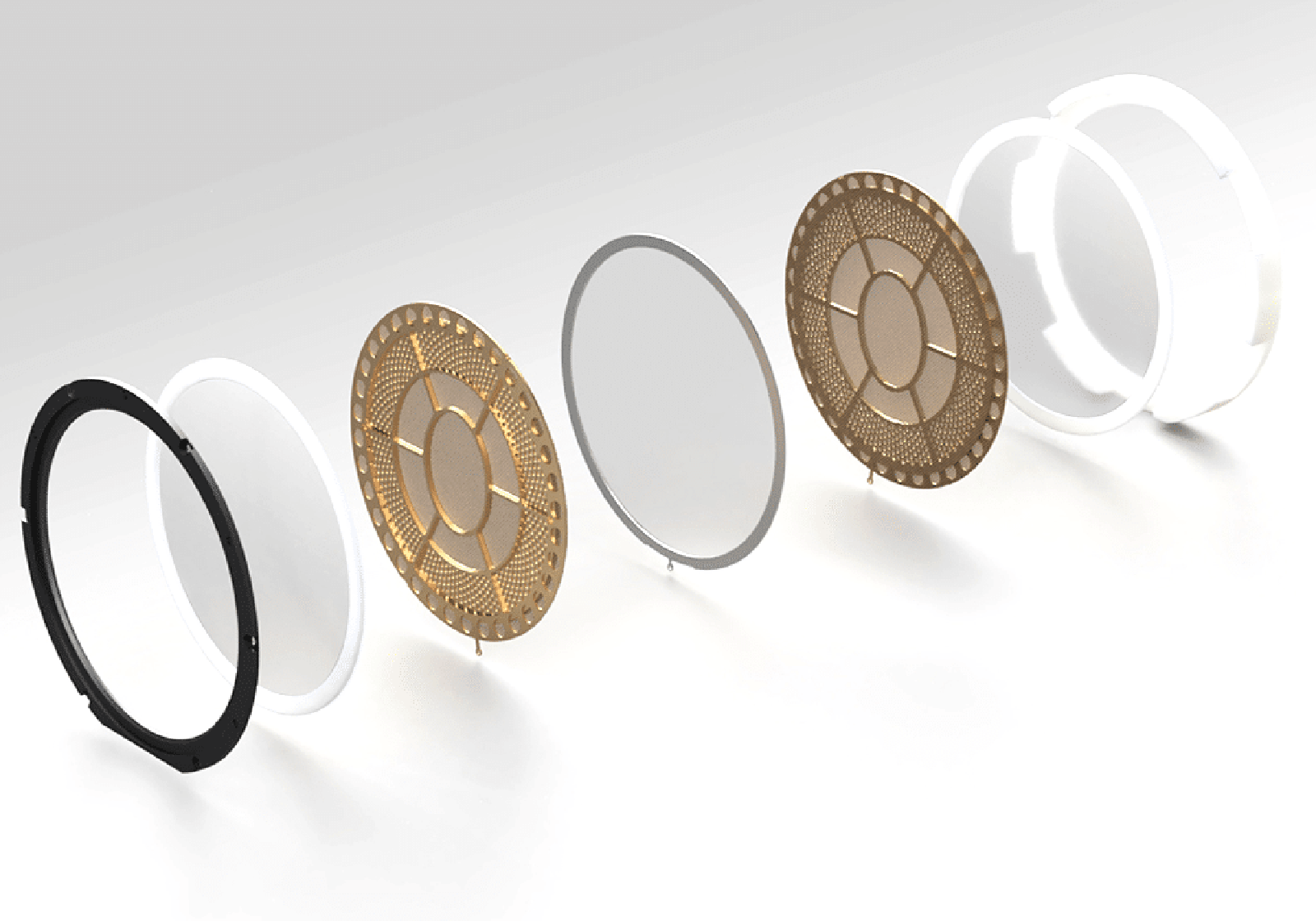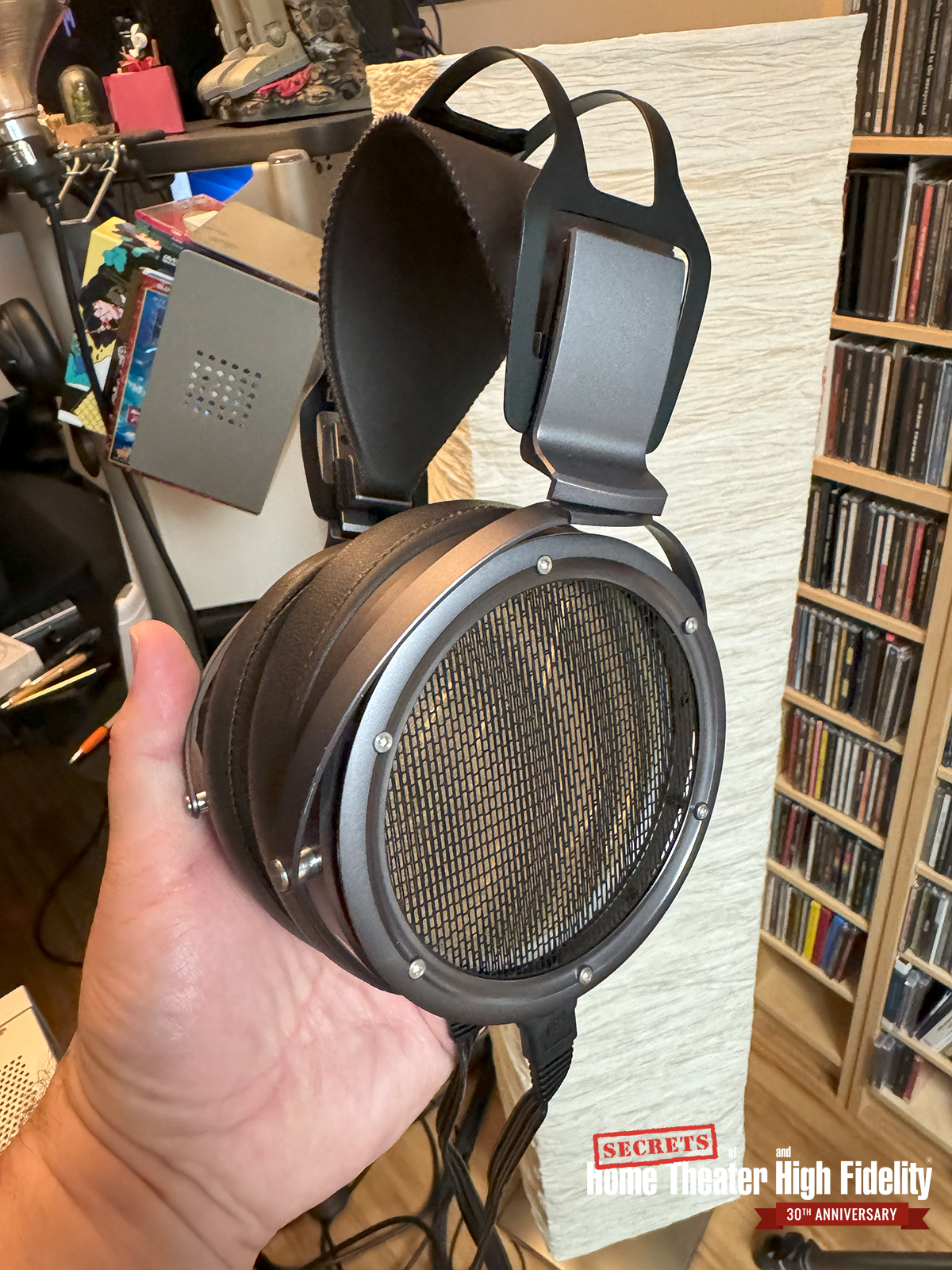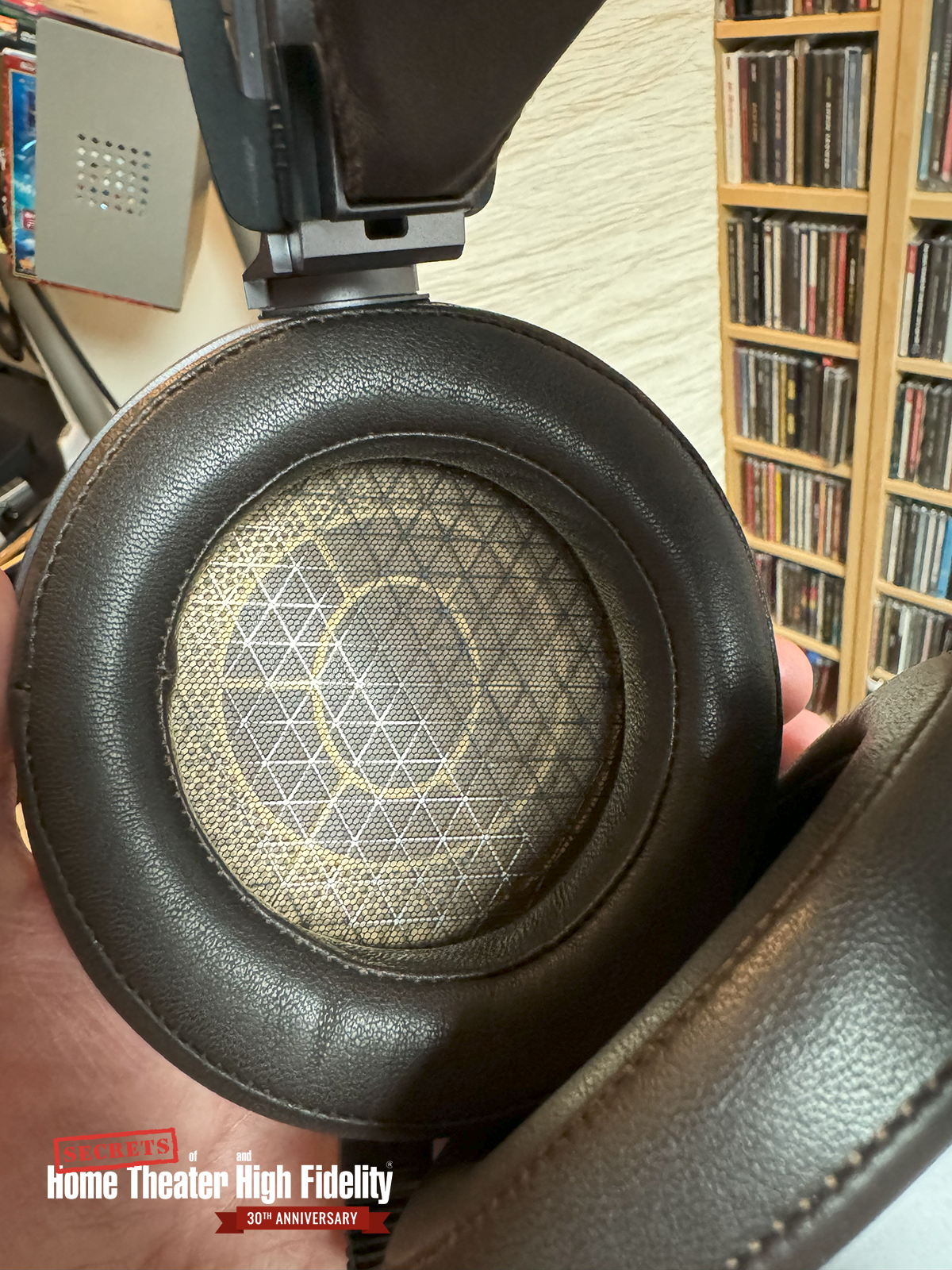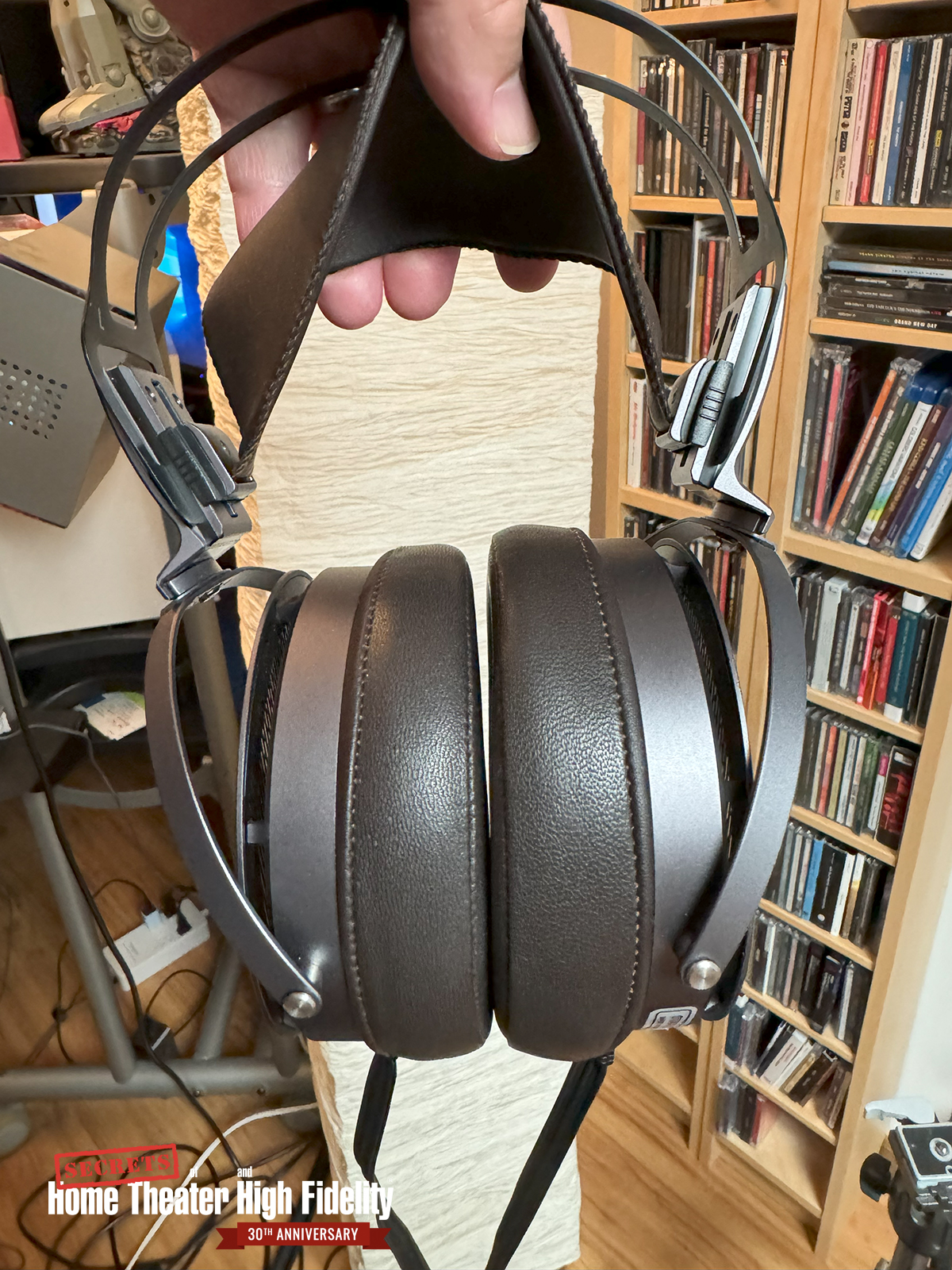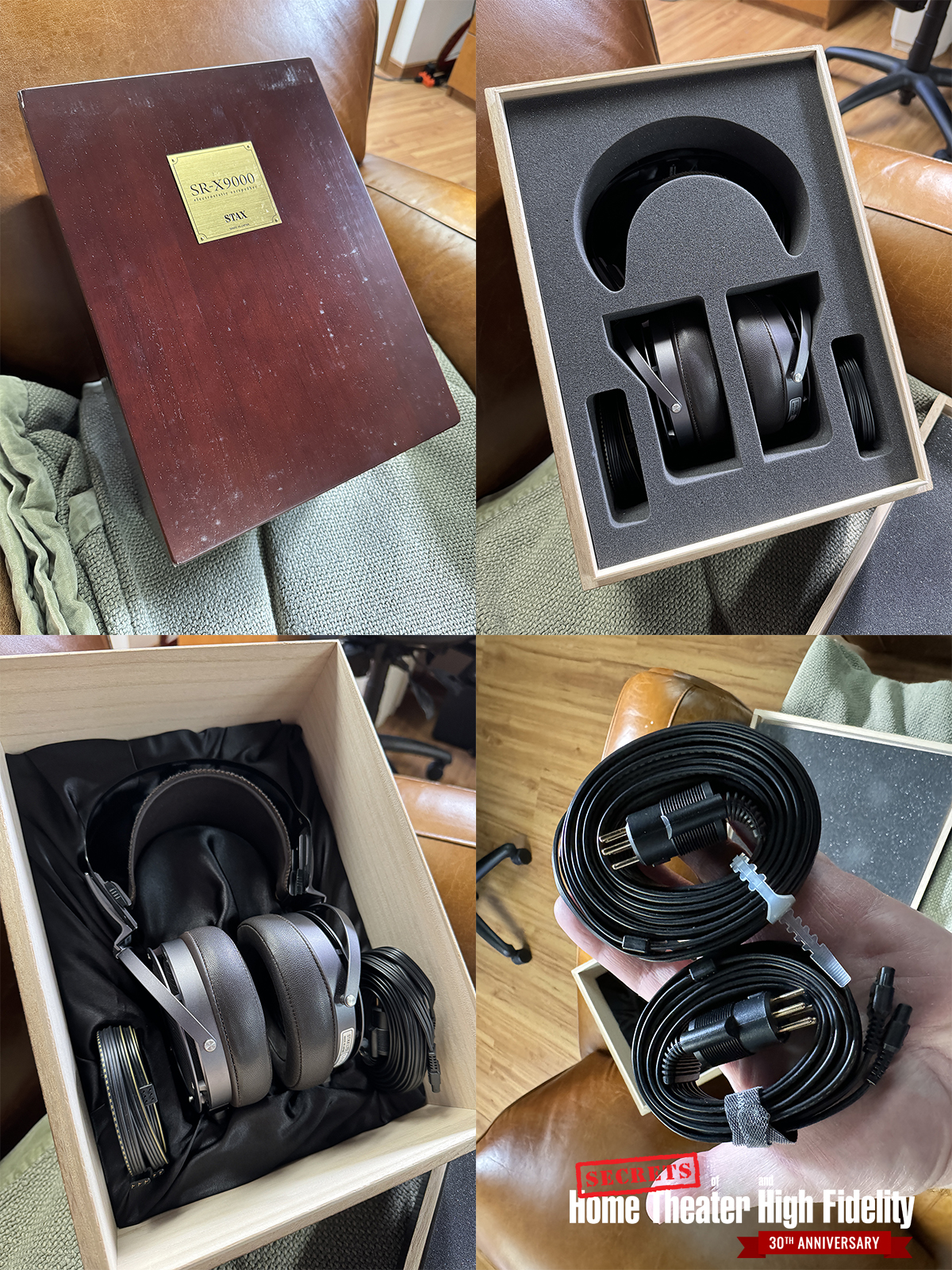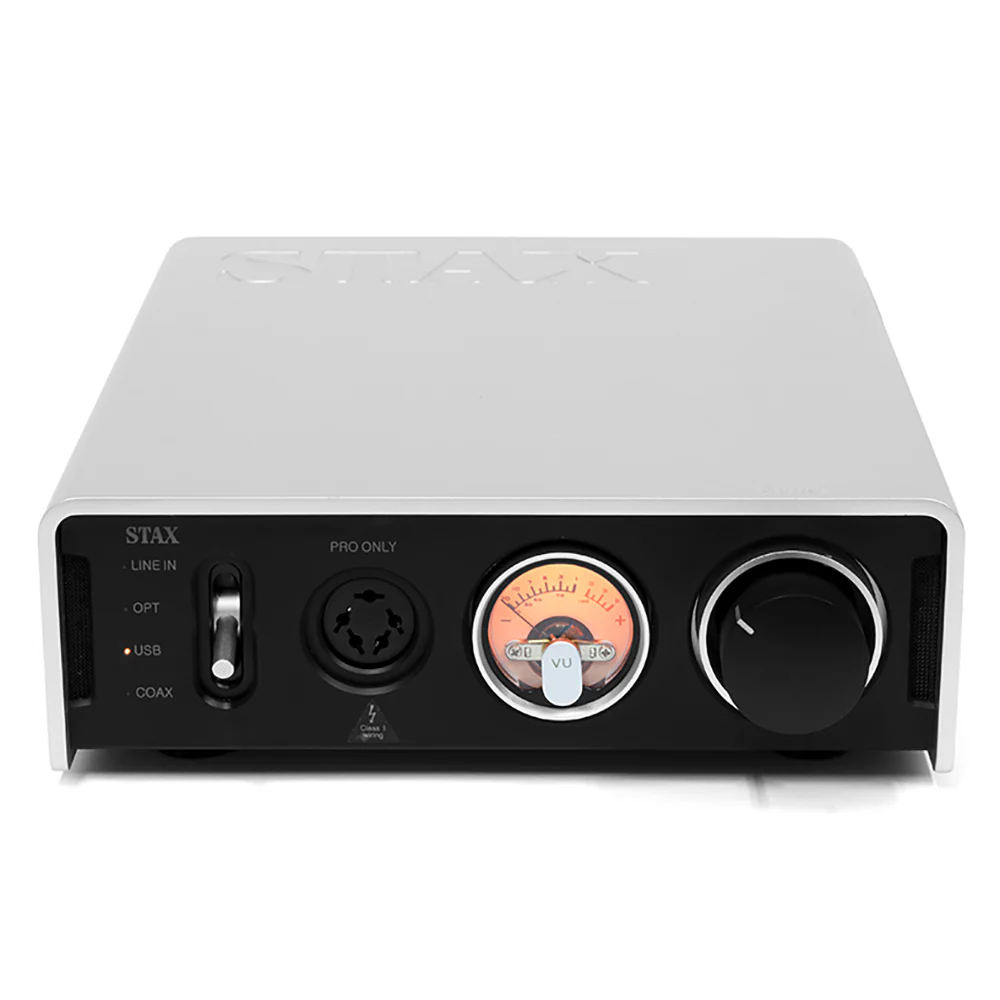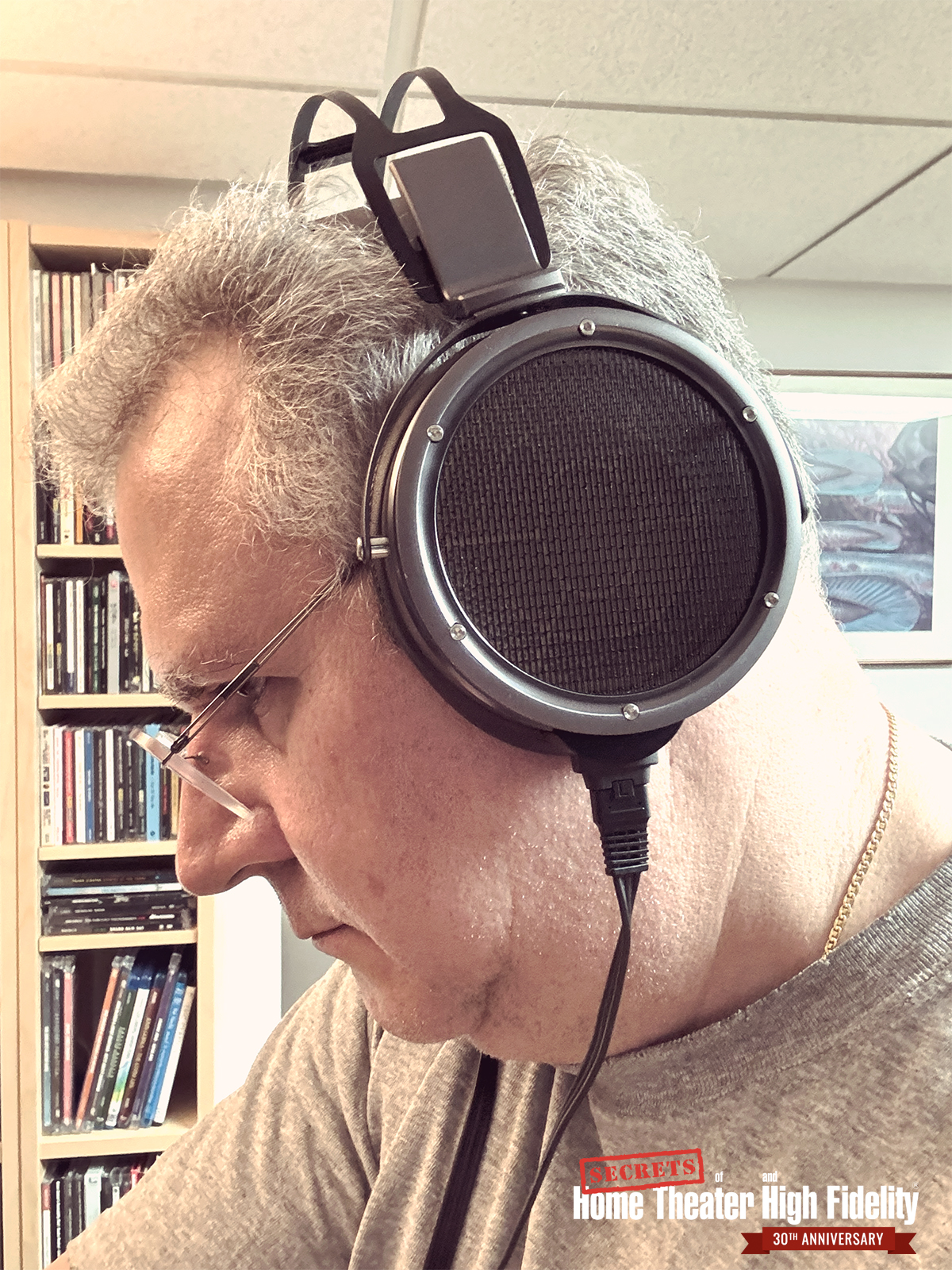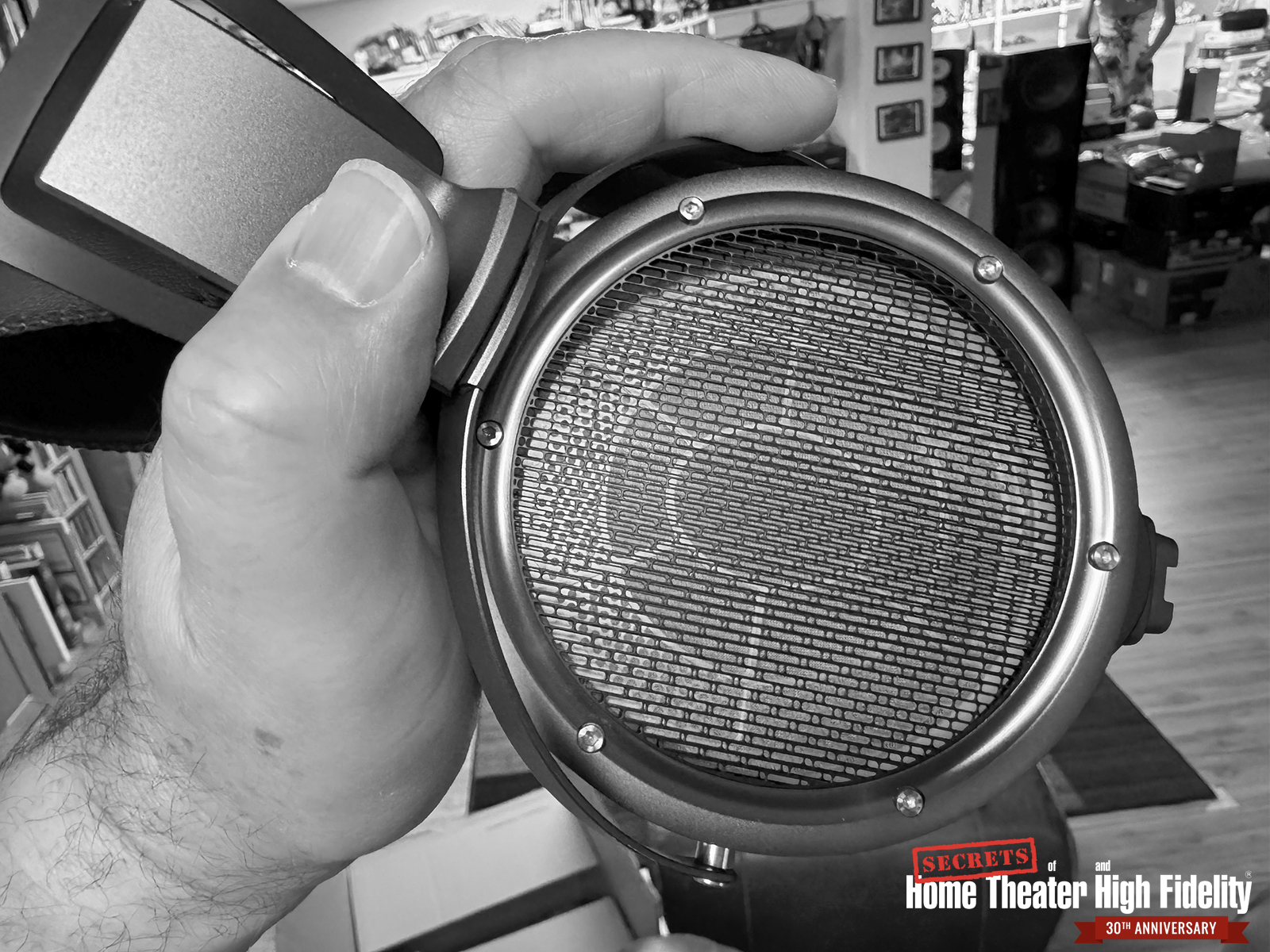Most consider electrostatic headphones to be at the pinnacle of the personal audio pecking order, and the first company most people consider when it comes to electrostatic headphones is STAX.
The STAX SR-X9000 is the latest flagship model electrostatic headphone (or earspeaker as they are often called) in the company’s lineup. They currently cost $6,200.00 which is already an eye-watering price for a set of headphones. They (like all electrostatics) require specialized amplification, of which STAX sells various models. STAX sent along their flagship headphone amplifier, the SRM-T8000 ($6,090.00) for a fully premium listening experience.
So, what does a just over $12K personal listening rig ultimately get you? It nets you every technological update and bit of experience that STAX has discovered over the past 85 years in this field. You get a set of truly handmade components that are still produced in Japan by legitimate craftsmen, one at a time. You also get a truly effortless listening experience that differs from any other headphone driver technology out there. I’ve now had a chance to listen to every current model of STAX earspeaker and the SR-X9000 offers the most balanced and sublime musical reproduction of all of them. Are they worth it? At the time of this writing, there is a 3-month waiting list to obtain a pair of these headphones. You tell me!
STAX SR-X9000 Earspeaker Highlights
- They sound effortless. More so than any other headphone design I’ve encountered.
- They have bass. Not as punchy as my STAX SRM-L700 mind you, but enough, and in balance.
- Transparency and lack of distortion are exceptional.
- Build quality and material choice/feel is top-notch.
- I can (and have) worn these for hours. So comfortable.
- Clear enough to hear differences in amplifiers/energizers.
- Makes it hard to settle for anything else.
STAX, as a company, got its start in 1938 and was founded by Naotake Hayashi who had studied audio engineering at University. Under its original name, Showa-Kouon Co., Hayashi-San’s fledgling company started life as a recording and mastering business doing soundtrack recordings for both music and film. As recording and reproduction techniques evolved and expanded, the company started to manufacture related audio equipment. Initially, Showa-Kouon Co. designed and developed early condenser microphones and pickup systems. The microphones were deemed of high enough quality to be officially adopted by Japan’s earliest broadcaster NHK. Oh, and the name of that first microphone? It was called the STAX-1. This would inspire Hayashi-San to rename his company to STAX in 1963. Beyond those early mics came early phono cartridge and tonearm designs which were soon followed in the mid-fifties by an external electrostatic tweeter design and more phono cartridge development and production.
The development also began on a wide bandwidth electrostatic earspeaker system called the SR-1 which saw its first sales in 1960. Over the years STAX has gone so far as to diversify into producing CD players, DACs, power amplifiers, and full-range electrostatic speakers for a time. Yet, as products and trends come and go, that which they are known for the most, the electrostatic earspeaker, remains at the core of the STAX name.
Jumping to the present, Secrets writer Lory Hawley just reviewed STAX’s new SRS-X1000 Earspeaker System which represents the company’s newest point of entry into the world of electrostatic headphones. So, it only seems fitting to “bookend” that review with something at the other end of the spectrum, the flagship STAX SR-X9000 earspeakers. Sometimes being Editor-In-Chief has its privileges, and as a certified personal audio nut getting a chance to spend some time with these top-of-the-line headphones certainly qualifies!
Announced in late 2021 and a fitting hallmark to help celebrate STAX’s recent 85th anniversary, the SR-X9000 takes all the technical and aesthetic qualities of the previous flagship SR-009S and ramps things up significantly. With larger, and further developed driver elements combined with “posher” materials and an elegant wooden presentation box, the message that these earspeakers are of an extra special variety is received loud and clear. And they continue to be made by hand in Japan. As such, STAX saw fit to send along their top dog SRM-T8000 tube energizer to power these earspeakers to their fullest potential. It’s not hard to figure out from my previous experience with STAX (as well as being an owner) that I have respect and affection for the brand and the product. But what exactly does the new SR-X9000 bring to the table to warrant their price and position? That’s what we’re here to find out!
Type:
push-pull electrostatic large circular sound element, open-air type enclosure.
Electrode:
MLER-3
Frequency response:
5 Hz – 42 kHz
Electrostatic capacitance:
110pF (including cable)
Impedance:
145kΩ (including cable, at 10kHz)
Sound pressure sensitivity:
100dB / input 100Vr.m.s. / 1kHz
Bias voltage:
DC580V
Earpad:
Genuine leather (skin touching portion), high-quality artificial leather (surrounding portion).
Cable:
Silver-coated 6N (99.9999%) OFC parallel 6-strand, low-capacity special wide cable, 2.5m and 1.5m.
Weight:
432g (without cable)
MSRP:
$6,200.00
Frequency response:
1Hz – 115kHz +0, -3dB
Rated input level:
100mV (at 100V output)
Maximum input level:
30Vrms. (at minimum volume)
Gain:
60dB (x 1000)
Harmonic distortion:
0.01% or less (1kHz)
Input impedance:
50kΩ (RCA input), 50kΩx 2 (XLR input)
Maximum output voltage:
470Vrms (1330Vp-p) / 1kHz
Bias voltage:
580V DC
Mains voltage:
AC120V/AC220/AC230/AC240, 50/60Hz (depending on your country’s voltage)
Power consumption:
95W/Max. 58W (without optional slot)
Operating temperature:
0 to 35 degrees C (less than 90% humidity, non-condensing).
Dimension:
320 (W) x 103 (H) x 395 (D) mm (maximum protruding portion included).
Weight:
7.3kg
Misc:
Equipped with PARALLEL OUT, optional slot, volume bypass function, and mute function.
MSRP:
$6,090.00
Website:
Company:
SECRETS Tags:
stax, electrostatic, earspeakers, headphones, audiophile, energizer
Secrets Sponsor
Aesthetically speaking, there are two types of STAX earspeakers in the current lineup. The first is the rectangular space-heater/cheese grater type of design, officially known as the Lambda series. The second is the more traditional round-shaped headphone which traces its technological and design influence directly from the flagship SR-Omega earspeaker model from the early 90s. The SR-X9000 neatly fits into the latter category, taking driver design advancements that were pioneered (and which were onerously difficult to produce in quantity at the time) for the SR-Omega, and perfected them for use in these new earspeakers.
Let’s start with the basics of how an electrostatic driver (whether headphone or loudspeaker) operates. Imagine an incredibly thin and light diaphragm material (in STAX’s case, about 2 microns thick) that can accept a constant voltage charge. This wispy material is suspended between two electrodes which receive a fluctuating and alternating voltage charge from the incoming musical signal. This static charge (+) versus alternating charge (+ and -) condition causes the diaphragm to precisely vibrate, accurately recreating the music. The advantages are that in this type of system, the speed and accuracy of reproduction, along with the inherent transparency of output are just naturally very good. There are no magnets involved either, so any magnetically induced distortion (hysteresis) is nonexistent. The tradeoffs (if you factor easy portability out of the discussion) are mainly in bass capability. The driver’s surface area needs to be larger to reproduce lower frequencies and (even though they are close to your ears) they can only be so big when you wear them on your head.
The electrodes in the new SR-X9000 feature a construction that bonds, on a molecular level, 4 different layers of etched and metal mesh structures. STAX calls this construction process “MLER-3” and is an evolution from what began in the construction of the original SR-Omega earspeaker which was refined later through the SR-007 and 009s models. In a nutshell, it claims to result in a larger, more rigid electrode, with more precise tolerances that improve signal transparency.
These new electrodes are combined with a newly developed ultra-thin diaphragm that is 20 percent larger in surface area than that found in the SR-009s earspeaker and is said to be near weightless in mass.
All this new driver goodness is packed inside two milled aluminum earcup enclosures (as opposed to plastic ones) to eliminate any unwanted resonances. An angled, perforated guard mesh is on the outside of each earcup to help not only protect the drivers but to optimize rear reflected sound from the driver too. Plus, they allow an unobstructed view of those beautiful gold-plated electrodes, which look like something you’d see on a 1920s broadcast microphone.
The remaining construction materials used in the SR-X9000 are both resilient and luxurious. The frame to which the aluminum earcups are attached is predominantly made of stainless steel. Plastic is almost non- existent in the SR-X9000. The earpads and headband are swathed in soft sheepskin leather. The earpads both seal around the ears and breathe nicely. At a weight of 432 grams, the SR-X9000 is not overly heavy to wear for extended periods so the overall comfort quotient is high.
The earspeakers come with two removable cable sets. A longer 2.5-meter run and another shorter length at 1.5-meters. The cable construction uses a combination of high-purity annealed copper wire and silver-plated annealed copper wire in a six-stranded flat configuration. Both wire sets are terminated with the traditional STAX 5-pin plug. The overall fit, finish, and feel of the SR-X9000 is certainly a noticeable step above the other STAX earspeakers in the line. The included Paulownia wood presentation case just seals the impression that these earspeakers are something special among headphones in general.
As I mentioned at the outset, STAX sent along their SRM-T8000 energizer to make sure that I was using an amplifier of commensurate quality with the SR-X9000. The SRM-T8000 is a hybrid amplifier design with a tube input stage and a solid-state output stage, and it is a beautifully put-together piece of gear. It has that Japanese “Golden Age of HiFi” look and feel to it that consistently makes it a pleasure to use.
As an owner of a set of SR-L700 Lambda earspeakers and an SRM-D50 energizer, I was able to do a little swapping around of gear and make some comparisons during the review. I also had the iFi iCAN Phantom combination headphone amplifier/electrostatic energizer (review coming soon) in the house to use with these earspeakers as well. I was curious to see how this non-STAX model of amp would fare with these king-of-the-hill headphones.
For a source, I was using my Microsoft Surface 3 Pro as my Roon Core, handling my complete digital audio music library. Roon could then send any digital audio content to my Topping DX9 DAC/Headphone amp which would then pass an analog signal through to either of the STAX or iFi amplifiers that I was using at the moment.
There are currently nine separate models of earspeakers in the STAX product lineup and it can be hard for someone who hasn’t experienced each one of them to understand that there is a distinct difference in the way each one sounds. Having now spent some extended time with each model I can confirm this to be the case. Some sonic differences can be rather subtle while others are less so. This means that one doesn’t simply work their way through the product line as their experience and budget allow, presumably to get to a “Headphone Holy Grail.” Instead, there may be two to three of these earspeakers that appeal to a particular taste, sonic presentation, or usage pattern that I could see a customer growing through.
But stepping back a little bit to give you an overall impression of the SR-X9000, there is a reason why these cans cost what they do. As far as I am concerned the STAX SR-X9000 are some of the most transparent and musically satisfying headphones, of any type, that I have had the pleasure to listen to. As much as I enjoyed the transparency of the SR-007A and the SR-009s when I had a hand in their reviews, the SR-X9000 is a window that is amazingly clearer still, but with a more satisfying level of bass reproduction than its forebears. Conversely, my Lambda SR-L700 earspeakers are the “bass-monsters” of the STAX line by comparison. The L700 produces a looser, but more impactful bass “slam” that makes them suitable for classic rock, blues, and other less-than-optimally recorded material. For me, they are the “fun” electrostatics, able to forgive all but the most egregious recording sins. But in terms of outright transparency, they are well outclassed by the SR-X9000. For me, top to bottom, the SR-X9000 are the most uniformly balanced-sounding earspeakers I’ve heard in the STAX product mix.
I still find it an odd thing to try to describe to someone what something sounds like without getting into nonsensical terminology. I’ve experienced, as a character trait, that dynamic headphones have an unmistakable impact in how they reproduce sound. Planar dynamic headphones excel at transient response, speed if you will, but their tonality (like dynamic drivers) can vary significantly. Electrostatics have an effortlessness to their sound, as if it just floats, with a level of transparency that I have not yet heard from planar or dynamic drivers. I find the tonality between electrostatic headphones to be a bit more consistent than in the other types, with bass capability being the biggest struggle in this design.
Using the different amplifiers that I had at my disposal with the SR-X9000 was great fun and a bit of a learning experience. Do you need to spend roughly $6,000.00 on an energizer to drive your brand-new SR-X9000? No, you don’t. Both my smaller STAX SRM-D50 energizer ($1,260.00) and the iCAN Phantom ($3,750.00) drove the review headphones successfully and with plenty of volume. The iCAN had the advantage of being able to switch between tube and solid-state input stages along with adjusting the amount of tube influence on the sound signature if you chose. If you are also something of a headphone collector (who isn’t it seems these days) the iCAN Phantom presents you with a single amplifier unit that can drive all your dynamic and electrostatic headphones from any company with its adjustable voltage biasing. Setting both the variable “tubi-ness” and gain settings on the iCAN to maximum gave me the most agreeable results with the SR-X9000 over several listening sessions.
My STAX SRM-D50 energizer did yeoman’s work driving the SR-X9000, and it was a satisfying-sounding combination by and large. I don’t know whether it’s because the SRM-D50 is a completely solid-state amplifier or whether it’s because it has a modestly lower output voltage than the big STAX amp but there were times I thought the SR-X9000 sounded a bit “lean” when paired with my little D50 amp.
I can’t deny though that the best sound pairing did happen when the SR-X9000 was connected to the SRM-T8000. They were made to complement each other, and I could find no sonic misstep with them when they were working together. The headphones, driven by that amp sounded flawless with all the transparency, purity of tone, and punch in the bass being available to my ears. So, no you don’t need this particular amp to drive the SR-X9000 but, to get the most out of those headphones, you’ll probably ant it. So, treat yourself if you’re able!

Anastasia Kobekina: “Venice”, Sony Classical, 2024, 24/96 stream via Qobuz.
A beautiful album of cello-centered pieces inspired in various ways by the city of Venice, Italy. Listening to a track such as the Allegro portion of “Vivaldi’s Cello Concerto in A Minor, RV 419: III” supported by the Basel Chamber Orchestra, is a revelation through the STAX SR-X9000. The opening double bass plucks come through with such satisfying weight and impact but with enough clarity that you can hear the performer’s fingers moving across the strings. The accompanying lute sounds startlingly real in every way, from the fingers plucking the strings to the tone of the palm slaps against the instrument’s body to the lute’s resonance filling the recording space. Ms. Kobekina’s cello playing sounds as clear as can be through these earspeakers. It’s like every bit of detail of her bow moving across those strings has been effortlessly extracted and projected in front of me. There is a purity of sound happening here that is a step above the norm. I very much feel like I’m in the room with these earspeakers.
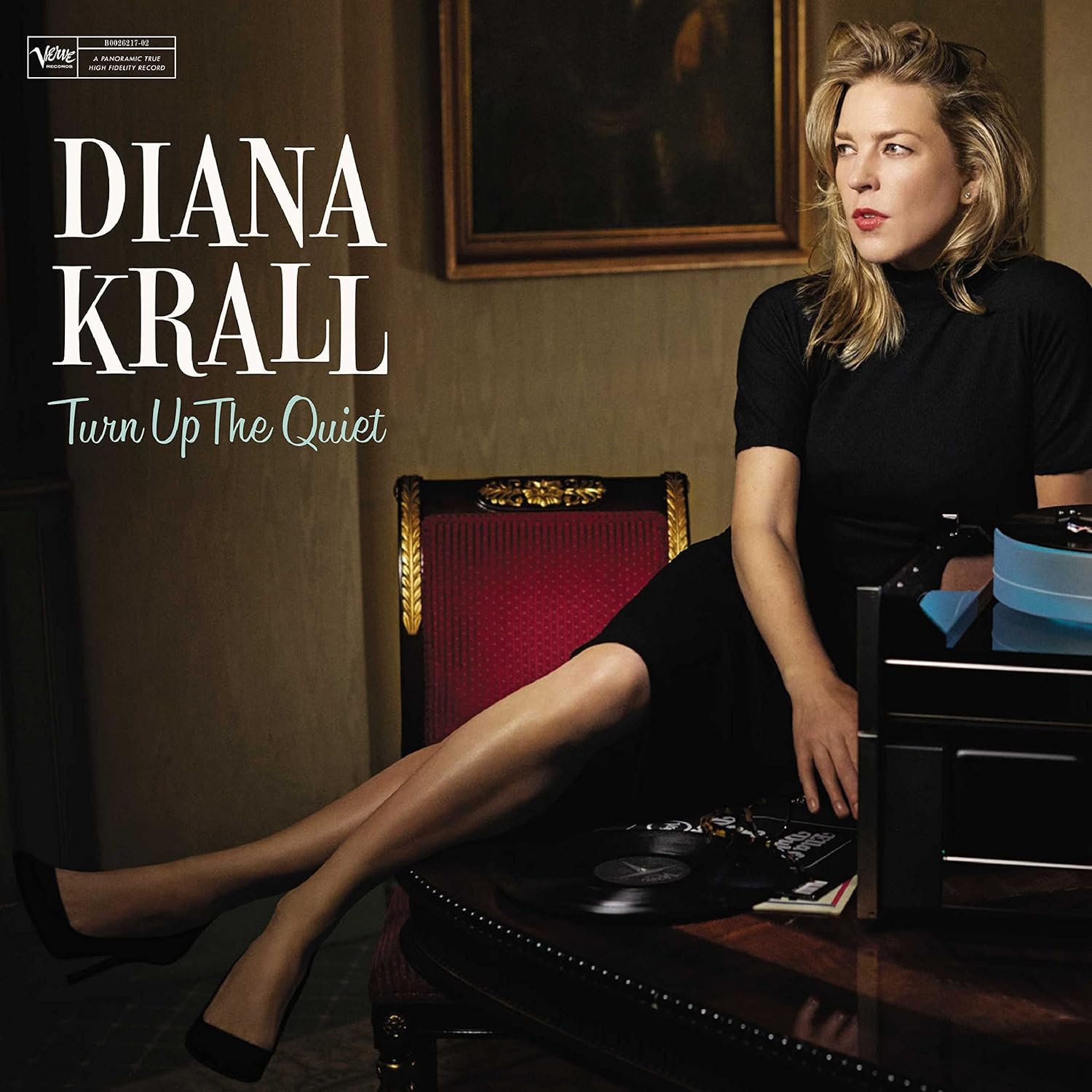
Diana Krall: “Turn Up The Quiet”, Verve, 2017, 24/192 stream via Qobuz.
Regardless of whether you think Diana Krall is the bane of every HiFi show on God’s green Earth or not, you can’t deny that her musicianship, production quality, and vocals are justifiably superb. Turn Up The Quiet is an all-around excellent album and one of my favorite songs from it is “No Moon At All.” Ms.Krall’s piano playing is the epitome of taste and her interplay with John Clayton Jr’s acoustic bass throughout the track is skillfully done. The SR-X9000 reproduces the snappiness and verve of their playing perfectly. The tone of her piano sounds full and natural with the decay of the notes being fully rendered. The bass notes sound weighty and tight, without any sort of bloat to them. And then there is that trademark smokey voice of hers that comes through so nicely on the STAX. The SR-X9000 balances the richness in her vocals with the clarity of their reproductive nature to where Diana Krall’s voice just sounds right. There is no artificial “air” from the headphone tuning that lightens up her vocal tone. It just floats in space in front of you like it was naturally sung.
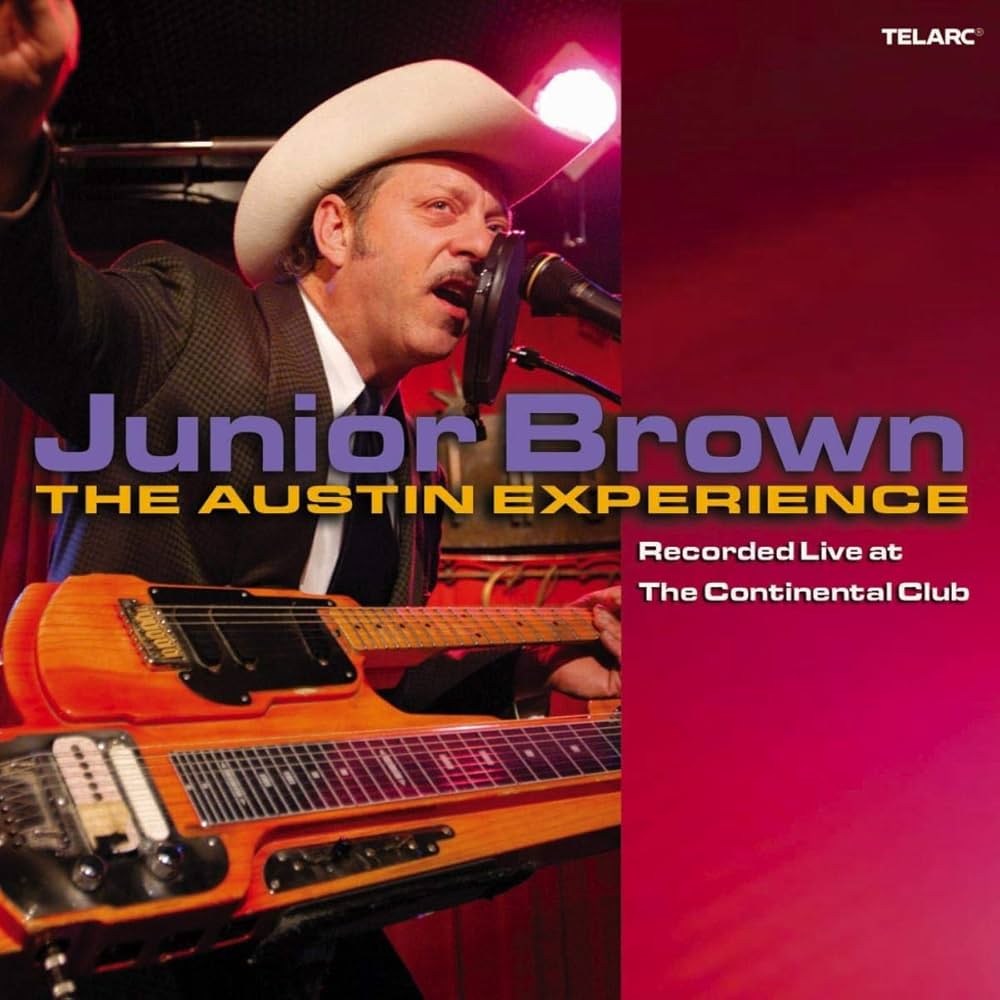
Junior Brown: “The Austin Experience – Live at The Continental Club”, Telarc, 2005, 16/44.1, CD.
I’ve seen guitar-slinger Junior Brown live in concert on a few occasions and each time the small venue performances were electrifying. This Telarc CD is expertly recorded and successfully captures all that live energy and atmosphere to the disc. Listening to his classic track “My Wife Thinks You’re Dead,” the SR-X9000 does a superb job recreating every nuance of the recording. I feel like I am immersed in the environment with different layers of the cheering and whistling audience placed to my sides and behind me. Junior Brown’s voice has that unmistakable baritone drawl that resonates through the entire room and the STAX reproduces that rich deep vocal tone clearly and wonderfully. Of course, I can’t mention Junior Brown without touching on his guitar playing which is a little less raw fireworks and a little jazzier sophistication here. The country-fried Telecaster-style piercing twang and ringing to the notes are flawlessly recreated by the SR-X9000 such that they sound as real as can be. I can distinctly make out the buzzing from Brown’s guitar amplifier as he pushes it during his solos with some extreme string bending and harmonics manipulation. Other, more subtle details like the drummer’s brushes being struck and
dragged on the cymbals are picked up and rendered with just the right sheen to them. It all makes for an immersive, fun, and satisfying listen!

ZZ-Top: “RAW” (‘That Little Ol’ Band From Texas’ Original Soundtrack, BMG, 2022, 24/96 stream via Qobuz.
This stripped-down, live recording of ZZ-Top is probably one of the best representations of this classic band ever put to tape. No sampling, no synths, no tricks of any kind. Just Billy Gibbons, (the late) Dusty Hill, and Frank Beard doing their thing on stage with the volume cranked up to 11! “Tube Snake Boogie” is a fantastic example of these guys just playing raunchy, loud, distortion-laden blues and the SR-X9000 does not balk at having to do it. As a matter of fact, they make it sound extra tasty, with a side of hot sauce! The almost jungle-beat kick and tom drum opening of the track hits satisfyingly deep and hard through the STAX just before Gibbons’ distortion-filled guitar opens up. And right as that cackling Telecaster comes raging in, I can pick up every little bit of string detail, amplifier crackle, and fuzz that he’s got going on. Gibbons’ singing sounds a little more haggard than it used to in the band’s heyday, but he can still get that old swampy growl going in his lyrics and it sounds really, really good here. The STAX SR-X9000 doesn’t just excel at recreating high-brow delicate musical events, they can get down and play as raunchy as you dare.
Secrets Sponsor
When you want, for all intents and purposes, that almost perfect personal listening experience. You go to STAX, and you ask for the SR–X9000 electrostatic earspeakers. Bundle them with an SRM-T8000 energizer and you will own an endgame headphone listening system for the ages. End of story.
- Superb tonal balance, top to bottom.
- Enough bass to keep me happy.
- Excellent transparency with no discernable distortion.
- Exceedingly comfortable.
- Beautiful fit and finish.
- The sheepskin pads feel cool and comfy.
- Perfect for long listening sessions.
- At this price, the inclusion of a matching stand would be welcome.
I don’t claim to have listened to every headphone out there…yet. But I have heard more than my fair share and as of this point in my experience, there is nothing quite like the sound from a fine set of electrostatic headphones. STAX is the originator in this sphere and with the SR-X9000, they have succeeded in distilling all their 85 years of experience into creating a truly touchstone product. At the same time, being both highly advanced in their technical design and feeling almost “old world” artisanal in their construction, STAX has essentially created their unicorn. When mated to a superior amplification platform, like the STAX SRM-T8000 energizer, the SR-X9000 earspeakers provide one of the finest listening experiences that I have ever been exposed to. It was truly moving to listen to some of my favorite music through this system. The combination of effortless reproduction, near-perfect (to me) tonal balance, long-term comfort, and beautiful finish make these headphones incredibly desirable in my book. Someday perhaps. When the kids’ college is paid off…


